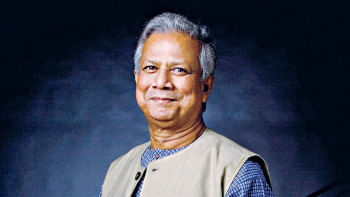Australia, and yet again

Minnows
Canada, Holland, Namibia, Kenya
Format
The organisers all but ignored lessons learned from 1999 and persevered with the Super Six, although they tried to even things out by tweaking how the group-stage points were to be carried through. It was still proved to be fundamentally flawed, as boycotts of matches in Kenya and Zimbabwe, on political and safety grounds, skewed points so much that Kenya reached the semi-finals courtesy of wins over Bangladesh, Canada and Sri Lanka.
Innovations
The bloated schedule, resulting from an increase from 12 teams to 14, led to many meaningless one-sided matches. "It was simply too big and too long," Wisden noted, and considering the tournament ran over more than six weeks, it was hard to disagree. The extra matches also forced reserve days to be scrapped even though the competition was being held late in South Africa's cricketing year, resulting in two washouts, which effectively eliminated Pakistan and West Indies. The experiment with Hawk-Eye, trialled in the Champions Trophy a few months earlier, was not continued. Relay throwing made its first appearance.
Early running
The competition began with a tense game between South Africa and West Indies. At the time, the hosts' defeat looked a mere hiccup; a ridiculous miscalculation in their final group game meant it contributed to their exit, with a resulting tailing off in local interest. Canada briefly enlivened proceedings when they beat Bangladesh, although Bangladesh's performances underlined how poor a side they were. Kenya qualified for the Super Sixes courtesy of a forfeit when New Zealand refused to play in Nairobi. Zimbabwe progressed thanks to England's boycott of Harare and the points they got in the abandoned match against Pakistan, but their every move was overshadowed by internal politics.
Super Six
Australia were all but guaranteed a semi-final berth before they started, while Kenya and Sri Lanka only had to beat Zimbabwe to do the same. India joined those three with convincing wins in all their matches. But while the presence of two minnows pleased neutrals, the absence of many big names, including the hosts, meant a number games were played in front of empty stands.
The semis
India were never going to slip against a keen but limited Kenyan side, especially in front of a capacity crowd that outnumbered the Africans by about 100 to one. Sourav Ganguly hit a hundred and from then on the players did little more than go through the motions. Australia survived uneasy moments to see off Sri Lanka, with Brett Lee restoring the world order after Australia had limped to 212 for 7. Although rain ended the game early, the result had long since been known.
The final
It was as one-sided as the final in 1999. So savage was the attack led by Ricky Ponting (140 not out off 121 balls), with support from Damien Martyn and Adam Gilchrist, that Australia were never under threat. Sourav Ganguly went down guns blazing, and a rain break, preceded by Ponting desperately asking his spinners to race through overs to ensure a result, did briefly stir the crowd. Australia were deserved winners, and unlike in 1999, they dominated throughout. Michael Bevan collected his second winner's medal without having to bat or bowl in either final.
Controversies
Shane Warne was sent home before Australia's campaign began after testing positive for a diuretic and was later banned for a year. There was a dispute between the BCCI and its players, over product endorsement, and the ICC withheld India's share of revenue until the problem was resolved. New Zealand's board refused to let its team play in Nairobi because of recent terrorist activities, while it was left to England's players to take a stand not to play in Zimbabwe on "moral, political and contractual" grounds. Andy Flower and Henry Olonga protested against the Robert Mugabe regime by sporting black armbands "mourning the death of democracy" in "beloved Zimbabwe".

 For all latest news, follow The Daily Star's Google News channel.
For all latest news, follow The Daily Star's Google News channel. 



Comments